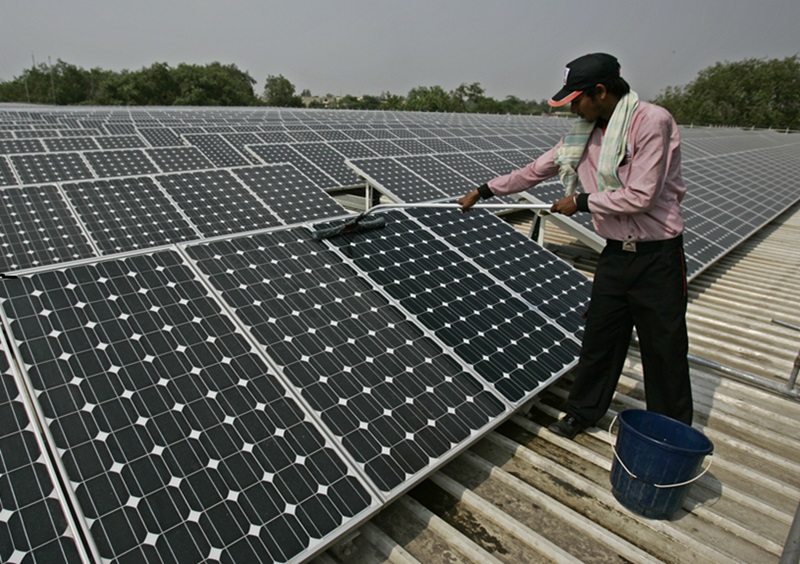.png)

Pandya, a communications professional, explores climate, energy transition, and security. Off the grid, he recharges with long-distance runs.
June 29, 2025 at 5:26 AM IST
The renewable energy industry and the government are engaged in an intense debate and discussion regarding the future of the Interstate Transmission System waiver. As of July 1, the ISTS waiver will be phased out in increments of 25% annually and will be fully withdrawn by June 30, 2028. Introduced in 2016, the waiver exempted renewable projects, such as wind and solar, from paying any charges for the transportation of power across states.
This was one of the key factors that encouraged the setting up of renewable projects, as ISTS-exempted green power became competitive. Estimates vary, but savings range from ₹0.40 to ₹1.5 per unit, depending on the load and distance. These savings are significant in the context of the overall cost of power and have worked particularly well for power-intensive industries, such as steel, cement, and aluminium, since cheaper green electricity reduces production costs, boosting margins.
Commercial and industrial consumers account for approximately 40–45% of India’s electricity consumption. However, their average tariff is relatively high at ₹11 per kWh. In contrast, industries in China pay significantly lower tariffs of ₹7.5 per kWh, giving them a competitive edge, particularly where electricity is a significant cost component. The introduction of non-tariff barriers such as the Carbon Border Adjustment Mechanism adds to the need for green power at a competitive price.
The ISTS waiver has also spurred the construction of solar and wind projects in states such as Rajasthan and Gujarat, due to abundant solar radiation and ideal wind speeds. Power can then be sent from these states to any part of the country since there are no transmission charges.
According to the government’s proposal, any project commissioned after June 30, 2025, will be governed by the new ISTS slabs and will not qualify for the waiver. This effectively means that such solar or wind power plants will incur a substantial transmission charge throughout their 25-30 year lifespan. It is still early days, but the phased withdrawal of the waiver is likely to push the cost of renewable power, particularly in future tenders. It will also have a bearing on projects where the Letter of Award is still pending.
The renewable industry has suggested multiple options to the government, including extending the waiver by 2-3 years, providing a window of 6-9 months for projects nearing completion, and reducing the quantum of rollback from the current 25% to 10%-15%. The government, however, has yet to make a decision.
From the government’s perspective, the revenue may not be much even if ISTS is reintroduced. According to estimates, the incremental impact of the ISTS waiver by December 2026 would be ₹13.74 billion per annum. If 25% of the ISTS charge is reintroduced, it would amount to only ₹3.43 billion per year. To put this in perspective, the cost of extending the waiver is projected to be merely ₹0.04 per unit.
If the advantages far outweigh the gains to the exchequer, why is the government keen to reinstate the ISTS charge rather than keep it in abeyance to ensure a robust growth trajectory for the sector? Perhaps, from the government’s standpoint, the waiver was offered for a specific period to provide impetus to the construction of new projects. The incentive was scheduled to end in 2023, but it was extended till June 2025.
With a combined solar and wind capacity already exceeding 160 GW, the government believes that there is sufficient momentum, backed by a robust manufacturing ecosystem, to take the sector past the 500 GW mark by 2030.
According to government estimates, over 80 GW of solar projects are under implementation. The country’s hybrid and round-the-clock renewable energy projects are also advancing rapidly, with over 60 GW under implementation or tendered, thereby bringing the total of solar and hybrid projects to 300 GW.
There is also a view that even if the waiver is extended, there will always be projects that will not meet the deadline. Such a sop, however, cannot be offered endlessly. The technological breakthroughs in wind, solar, and battery storage will also make green energy more efficient and cost-effective. Consequently, the government aims to make the sector more competitive and less reliant on subsidies.
The continuation of the waiver may also distort the market and impact the development of other energy sources. Considering that the concept of battery storage is gaining momentum, the government has already made an exception and extended the ISTS waiver for both battery storage and pumped hydro storage for three years.
With the end of June approaching, the renewable energy sector remains hopeful that the waivers will remain in some form for at least a year, if not more, and that this will continue to provide tailwinds. Whether the arguments convince the government and will eventually favour the developers will be known soon.




